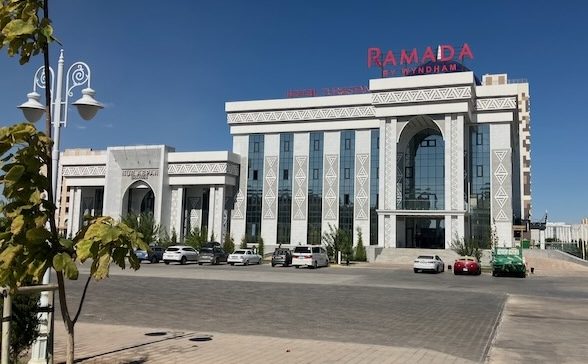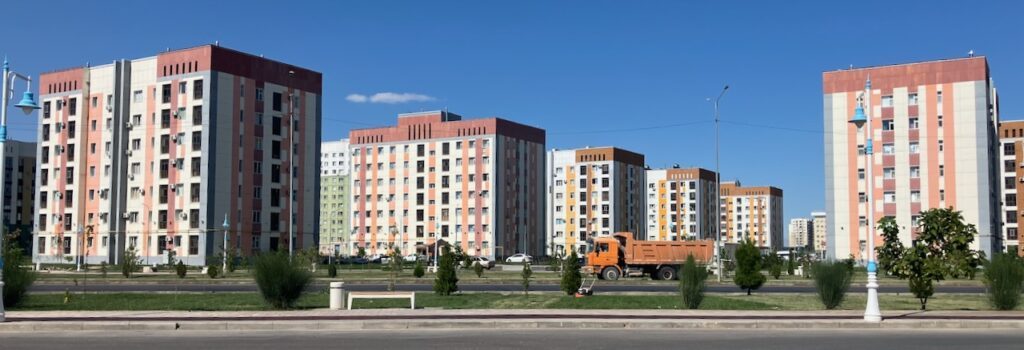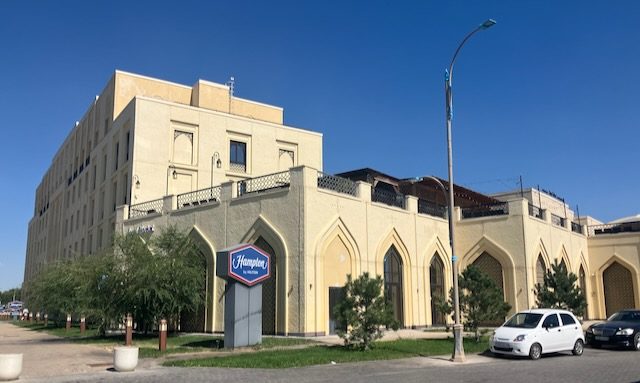TURKISTAN, KAZAKHSTAN
Turkistan’s Modern Makeover
One of the key cities during the Asian Silk Road period is reinventing itself

The city of Turkistan (also spelled Turkestan), meaning “land of the Turks,” is located in southern-central Kazakhstan and stands as one of the region’s most historically significant and rapidly developing cities. Positioned closer to Tashkent, the capital of Uzbekistan, than to either Almaty or Astana in Kazakhstan, Turkistan has a diverse population of approximately 224,000, nearly half of whom are of Uzbek ethnicity.
The city’s primary challenge lies in balancing its remarkable historical legacy with its aspirations for modern development. Originally, I expected my visit to focus on Turkistan’s influential role along the Great Silk Road and its rich spiritual and economic history. However, I found myself drawn more to the transformations occurring since 2018, when the Kazakh government initiated significant revitalization efforts. These initiatives aim to accommodate a projected population of 500,000 by 2050 and position Turkistan as a dynamic hub for the broader region.
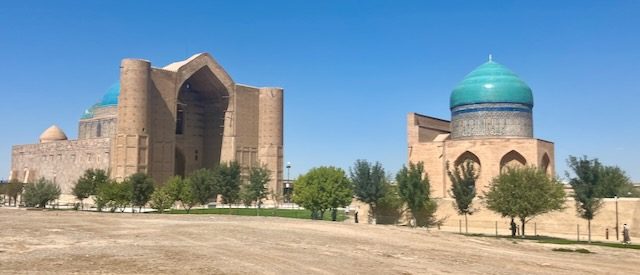
A Historic Legacy Guiding Turkistan’s Growth
Archaeological evidence shows that the region now known as Turkistan dates back to the 4th century, with the formal settlement established by nomadic groups in 490. Historically referred to as “Yasy,” the city’s prominence grew significantly due to its location along the Great Silk Road. This strategic positioning facilitated Turkistan’s development into a thriving center for art, science, and global trade.
A pivotal figure in the city’s cultural evolution was the esteemed Sufi thinker, poet, and mystic Khoja Ahmed Yasawi, who made Yasy the focal point of his preaching. His influence in the region transformed the city into a major destination for Islamic learning and spiritual reflection, earning it the moniker “the second Mecca” within the Muslim world. Today, Yasawi is interred in the Mausoleum of Khoja Ahmed Yasawi, which remains the city’s most significant structure. Recognizing its historical value, the mausoleum was added to the UNESCO World Heritage List in 2003.
In addition to Yasawi, 21 Kazakh khans and eight sultans are also buried in the city, further cementing its role as a historical and cultural epicenter. Known as the spiritual capital of the Turkic world by the Cooperation Council of Turkic-Speaking States, Turkistan attracts thousands of pilgrims annually. A local tradition holds that visiting the city three times is equivalent to one pilgrimage to Mecca, underscoring its religious importance to the Kazakh steppes and the wider Turkic region.
Former glories
The decline of the Great Silk Road, spurred by wars and the rise of maritime trade routes, gradually diminished Turkistan’s significance as a thriving caravanserai town where traders once rested, shared ideas, and exchanged goods. Over time, Turkistan transformed from a bustling hub of activity into a quieter waypoint, leaving behind traces of its former glory.
While Turkistan’s historical appeal remains, today’s visitor might find the city’s offerings modest compared to the lively souks or bustling medinas of other destinations. The historic core is small, with key attractions, including the Mausoleum of Khoja Ahmed Yasawi and a compact underground mosque, located a few kilometers from the town center. For just 500 tenge (about 1.25 USD), a joint ticket grants access to both, but these sites may only require a brief visit for casual tourists.

Turkistan's Modernization
Turkistan offers limited tourist attractions, and much of the city lacks vibrancy, apart from the activity on its western side, where affordable accommodations are more readily available, a few kilometers from the historic core. To revitalize the historical area, considerable efforts have been made to enhance its appeal, including the creation of scenic parks, a camel-riding area, and a range of new lodging and entertainment options. The centerpiece of these efforts is the Karavansaray Turkistan Tourist Complex, featuring a striking shopping center designed to attract visitors.
While at first, these modern additions may appear to dilute the city’s legacy, their development was seen as necessary to reinvigorate Turkistan’s role in the region. The push for modernization began in 2018, when Shymkent—previously the largest city in the South Kazakhstan Region—was placed under direct governance by Kazakhstan. This reorganization elevated Turkistan to the status of regional administrative center, leading to the renaming of the area as Turkistan Region.
This region remains one of the poorest in Kazakhstan, with a once-powerful cotton industry that has waned significantly over the last century due to Russian dominance in large-scale trading operations. However, it is home to the country’s largest uranium reserves, and over the past five years, industrial output has more than doubled, driven by mining and metallurgy manufacturing. The modernization of Turkistan aims to leverage these resources and bring new economic vitality to the city, establishing it as a cultural and industrial focal point in Kazakhstan.
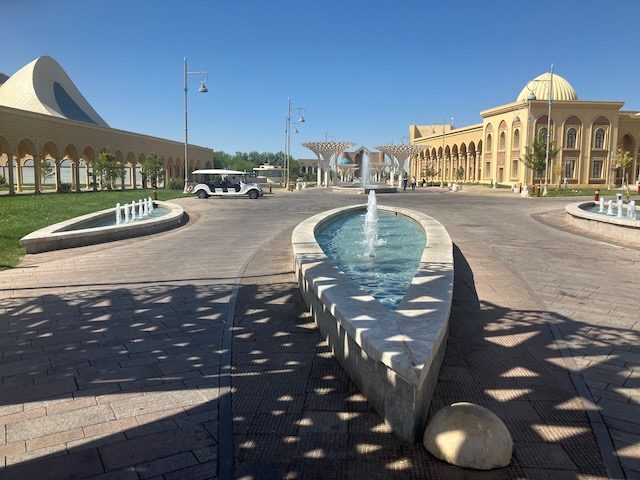
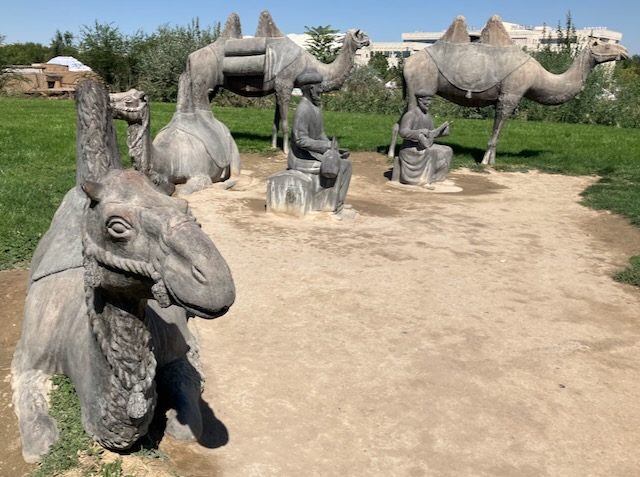
The “Special” new growth drivers
The primary elements of Turkistan’s growth strategy are integrated under the framework of a Special Economic Zone (SEZ), providing significant tax incentives to spur development. This SEZ includes an international airport built in 2020, though currently limited in flight availability, along with three industrial zones—one of which hosts an established tenant base—and the complex encompassing the historical sites. Notably, this SEZ extends beyond industry to support tourism and cultural areas, making it one of the most generous SEZ initiatives globally.
The Karavansaray Turkistan Tourist Complex, a short walk from the historical sites, adds an extended dimension to the visitor experience. Named after the historic caravanserais that dotted ancient trade routes across Asia, the complex centers around an expansive shopping center complete with a canal and lake. It also hosts several high-end hotels, along with a selection of attractive two- to three-level residential buildings, aimed at buyers seeking close proximity to the area’s amenities.
Despite its striking design and the welcome relief it provides from the desert heat, the complex felt underutilized during a weekday visit. Most stores cater to high-end fashion, with food and beverage options limited. Most are poorly located and with limited outdoor seating. Hopes of me enjoying a coffee outdoors to soak in the atmosphere had to be set aside, as the only options were located just outside the complex. Inside, the food court also lacked appeal, and many peripheral spaces remain vacant. There’s still progress to be made in bringing more vibrancy and diversity to the complex, making it a truly compelling destination for visitors and locals alike.
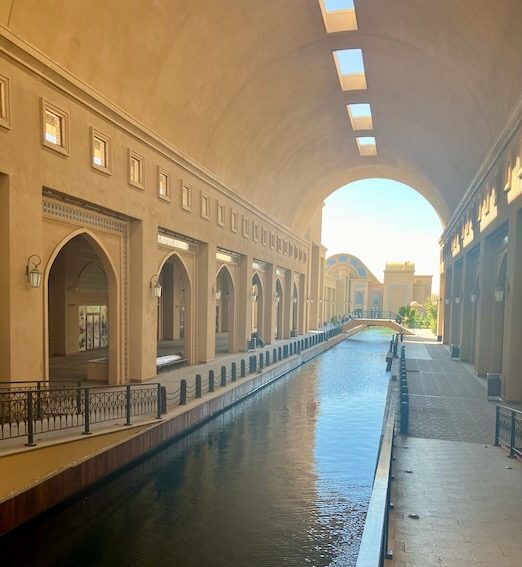
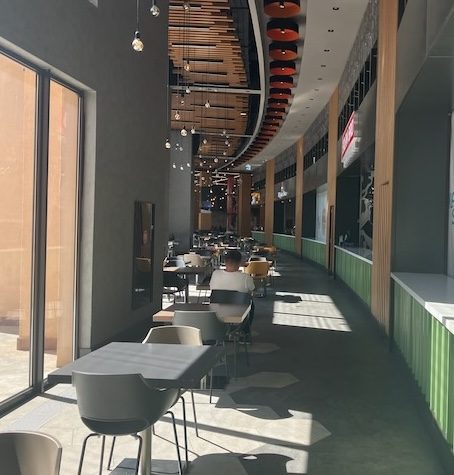
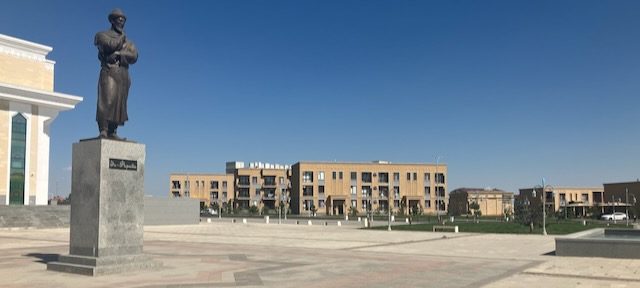
Ancient Roots New City
The most striking surprise during my visit was the ambitious new city being developed further east of the historic core. Thanks to Turkistan’s efficient bus system, I was able to reach the area quickly and affordably. Spanning 6.7 million square meters, the area has already seen significant development, with offices for the new regional government, a four-star hotel, a shopping center named Turan Mall, and multiple residential blocks targeting middle-income buyers.
Construction is ongoing, with new apartment buildings rising rapidly, giving the area a feel reminiscent of Astana, Kazakhstan’s modern capital. Like Astana, this new district is becoming increasingly livable, offering a growing selection of restaurants and cafes, in contrast to the more limited options in the older western parts of Turkistan. While the cities of western Kazakhstan often receive less attention compared to those in the south, particularly in Uzbekistan, this new development is a clear indication that Turkistan is moving forward. Visitors may come expecting to immerse themselves in the past, but the reality is that the city is firmly stepping into the future.

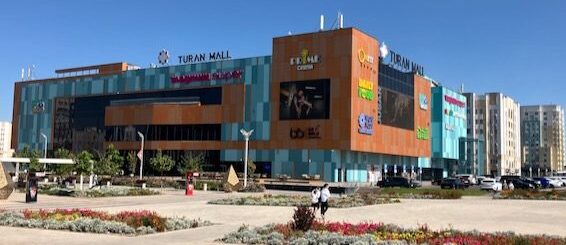
Travel tips for Turkistan
Turkistan is reachable by an overnight train from Almaty, with tickets and seat reservations easily booked on the Kazakhstan Railway website. Just make sure you don’t show up at the wrong train station—Almaty has two, and it’s a mistake worth avoiding. Once in Turkistan, getting around is refreshingly simple. Taxis are available on apps like Yandex, or you can hop on the buses, which are frequent, cash-only (100 tenge as of Oct 2024), and thankfully not the human Tetris experience you get in Shymkent. These buses cover the city well, with routes that take you from the historic sites to the new city. For accommodations, the high-end hotels cluster in the Karavansaray complex and new city area, while more budget-friendly options are sprinkled around the old commercial district.
The commercial districts have a few supermarkets, but for a larger grocery haul, the Magnum hypermarket at the Karavansaray complex is your best bet. While the older area where I stayed had only one coffee shop (a bit of a caffeine desert, frankly), the newer eastern part of the city is much better stocked with coffee spots for your morning fix.
